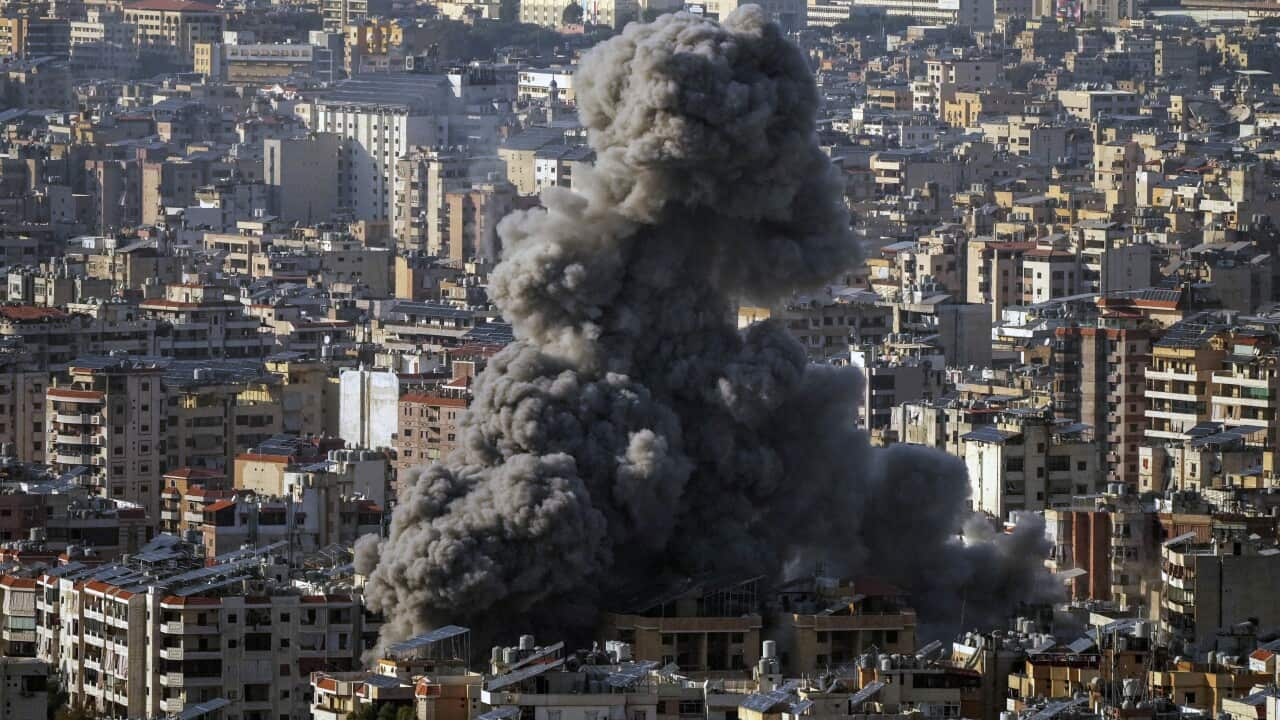It could be a time for a breath of fresh air, with a new report finding three Australian cities have some of the cleanest air in the world — but one is lagging dangerously behind.
The report from a vehicle trading site, Auto Trader, analysed air pollution data from almost 400 cities worldwide.
Hobart, Darwin and Canberra topped the list, while Sydney, one of Australia’s most populous cities, has come in the 150th spot, posing questions about the impacts of air pollution.
But experts have cautioned against taking the data at face value, saying the logic is “fundamentally flawed”.
Despite being the world’s fourth smallest country, Funafuti in Tuvalu has been ranked the city with the lowest air pollution. Source: Getty / Mario Tama
The cities with the cleanest air
According to the report, the tiny yet mighty city of Hobart in Tasmania came in first in Australia and third place globally with an air quality index of 1.
It was just beaten out by the island of Funafuti in Tuvalu, located west-central in the Pacific Ocean. The island is located in the fourth smallest country in the world by land area and has a population of 6,716, according to the 2017 Census. Climate change and .
In second place was Manaus in Brazil, located in the heart of the Amazon rainforest.
Hobart came in third place, followed by the Northern Territory’s capital of Darwin.
Rounding out the rest of the top ten were several Pacific cities, including Apia in Samoa, Nukuʻalofa in Tonga, Wellington in New Zealand, and Australia’s capital city, Canberra, which came in tenth place.
However, Professor Gavin Pereira, an environmental epidemiologist at Curtin University in Perth, said the ranking of cities was “fundamentally flawed, even if the calculations are correct”.
“Firstly, air pollution events like bushfires and dust storms are common in Australia even if the air quality appears okay at other times,” he said.
“Secondly, it ignores everyone living outside the selected cities, including those in regional rural and remote areas most prone to bushfire smoke.”
Three Australian cities have made the top 10 list for the cleanest air, but it’s not all good news. Source: SBS News
According to the report, there were some Australian cities that didn’t fare as well.
Adelaide came in at the 24th spot globally, Gold Coast at 29th, and Melbourne trailed behind, coming in the 52nd position.
Perth and Brisbane also lagged behind, taking out the 95th and 96th positions.
Coming in the last spot was Australia’s most populous city, Sydney.
The report claimed Sydney had come in 150th overall and received a worse score than the likes of London (90th).
But while the comparison against London might be up for debate, the reality that Sydney and Melbourne are some of the cities with the worst air pollution isn’t.
While this might be alarming, Pereira said it’s “not surprising”.
“The cities with the worst air pollution problems are the bigger ones — Sydney and Melbourne,” he said.
“That’s not surprising because they have more people, more traffic and more industrial activity.”
Sydney has ranked last among Australian cities when it comes to air quality, even falling behind London, the study shows. Source: SBS News
The cities with the worst air pollution, ranked in the bottom 10, were mostly cities in Asia.
These included Seoul in South Korea, Islamabad in Pakistan, Manama in Bahrain, Guangzhou and Tianjin in China, Santiago in Chile, Hanoi in Vietnam, Lahore in Pakistan, and New Delhi and Kolkata in India.
In last place was Shanghai in China, with an air quality index score of 4.92.
Pereira said low to middle-income countries were often of the most concern when it comes to air pollution.
“[This is] because air pollution levels are consistently high, air pollution events can be common, their governments have limited resources to adapt and protect their populations and because they often have people whose health is already relatively more affected by chronic and infectious disease.”
What are Australia’s big issues when it comes to air quality?
While the report might be best taken with a grain of salt, Pereira said Australians should still be thinking about air quality.
“Contrary to wide-held belief, Australia does have air pollution problems,” he said.
The Department of Climate Change, Energy, the Environment and Water says climate change is affecting Australia’s air quality, especially because of bushfires.
Bushfires can expose us to dangerous levels of smoke, which might have a short-term impact on the air we breathe. A warming climate can lead to increased smog in the summer, and drought can lead to dust storms, the department’s website states.
Additionally, population growth can see increased pollution due to fossil fuels in response to a greater demand for energy and an increase in cars.
Industry can also lead to local air pollution build-up, as well as wood heater smoke during the winter.
Gavin Pereira, an environmental epidemiologist at Curtin University, said that contrary to popular belief, Australia does have air pollution problems. Source: AAP / Dean Lewins
What are the effects of air pollution?
Air pollution can cause multiple risk factors, making it something we should all be conscious of.
“Other than affecting respiratory systems, air pollution is a causal risk factor for increased cardiovascular and cerebrovascular mortality and morbidity,” Pereira said.
Almost every organ can be affected by bad air quality as some pollutants are so small that they can penetrate the bloodstream and circulate through the entire body, the World Health Organization (WHO) says.
The diseases most commonly linked to air pollution include stroke, heart disease, lung cancer, chronic obstructive pulmonary disease, and acute and chronic respiratory diseases like pneumonia and asthma.
Pereira said there is an increasing amount of evidence that says it can cause adverse birth outcomes, including preterm birth.
According to the State of Global Air 2024 report, 8.1 million people died due to air pollution in 2021, making it the second largest risk factor for deaths globally.
Who’s most at risk?
Almost all of the global population (99 per cent) breathes air that exceeds WHO guideline limits and contains high levels of pollutants.
But there are some groups more at risk of developing adverse outcomes.
Low and middle-income countries suffer from the highest exposure.
Children, the elderly, and .
Pereira said those who can’t modify their behaviour to minimise exposure are also at higher risk, including people with disabilities and those exposed in occupational settings.


















